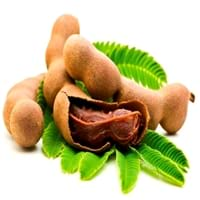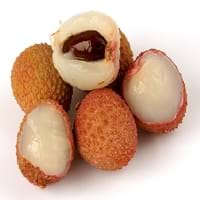Health Benefits
Boosts immune system, Boosts respiratory health, Cancer prevention, Digestive aid, Piles treatment
Cancer prevention, Cures gastro-intestinal troubles, Heart care, Muscle pain relief, Prevents blindness from diabetes
General Benefits
Beneficial in improving nerve function, Protects against parasites and worms, Relieves pain
Boosts immune system, Digestive aid, Fights against infections, Helps in weight loss, Maintains healthy cholesterol level, Strengthens bones
Skin Benefits
Anti-aging benefits, Brightens and lightens complexion, Exfoliates skin, Hydrates skin, Treatment of dark spots
Anti-aging benefits, Skin rejuvenation
Hair Benefits
Prevents hair loss
Promotes longer and healthier hair, Protects hair
Allergy Symptoms
Abdominal pains, Breathing difficulty, Dizziness, Eczema, Fainting, Hives, Itching, Nasal congestion, Swelling of face, Tingling sensation in mouth, Vomiting
Coughing, Diarrhea, Headaches, Hives, Itching, Labored Breathing, Nausea, Runny nose, Swelling of mouth, tongue or lips, Vomiting, Watery eyes
Side Effects
Decrease in blood sugar levels, Induces acid reflux, Allergic reaction, Tooth decay, May form gallstones
May cause abdominal pain, Diarrhoea, Mouth irritation, Throat irritation, Weight gain
Best Time to Eat
Along with meal, As a snack in the late afternoon, Don't consume at night and before bed, Strictly avoid empty stomach
As a snack in the late afternoon, Don't consume at night and before bed, Eat the fresh ones, avoid mixing with any other foods, don't eat after meal., Morning time (before lunch), Strictly avoid empty stomach
Vitamin B5 (Pantothenic Acid)
Vitamin C (Ascorbic Acid)
Vitamin K (Phyllochinone)
Phytosterol
Not Available
Calories in Fresh Fruit with Peel
Not Available
Not Available
Calories in Fresh Fruit without Peel
Calories in Canned Form
Not Available
Type
Tropical
Tree fruit, Tropical
Season
Spring, Summer
Spring, Summer
Varieties
PKM 1, Urigam, Hasanur, Tumkur prathisthan, DTS 1 and Yogeshwari
Emperor fruit, Mauritiu, Sweet Heart, Brewster, Haak Yip and Bengal
Color
Brown, Reddish-brown
Bright red, Pink red
Inside Color
Brown
Greyish-white
Shape
Curving Cylinder
Oval
Taste
Sour-Sweet
Crunchy, Juicy, Sweet
Origin
Africa
China, Indonesia, Philippines, Vietnam
Soil Type
Loam, Sandy, Sandy loam, Well-drained
Alluvial, Loam, Well-drained
Climatic Conditions
Humid to dry, Rainfall, Warm to hot climate
Absence of strong wind, Cold, Dry, Without frosts
Facts about
- Tamarind is used to prevent body odor.
- African children use the tamarind seeds in games.
- No cases of tamarind toxicity or allergy reported till date.
- The seed of Lychee fruit is toxic & can adversely affect the digestive system.
- This fruit gives a smoky flavor when eaten dried.
- This fruit is a symbol of love and romance in China.
Other Countries
Africa, Australia, Brazil, China, Mexico, Nigeria, Sudan, Taiwan
Australia, India, South Africa, Thailand, United States of America
Top Importer
United States of America
Hong Kong
Top Exporter
Thailand
China
Botanical Name
Tamarindus indica
Litchi chinensis
Synonym
Tamarindo, tamarindus
Nephelium litchi
Subkingdom
Tracheobionta
Tracheobionta
Division
Magnoliophyta
Magnoliophyta
Class
Liliopsida
Magnoliopsida
Family
Fabaceae
Sapindaceae
Species
Tamarindus indica
L. chinensis
Generic Group
Tamarind Sub
Soapberry
Difference Between Tamarind and Lychee
We might think that Tamarind and Lychee are similar with respect to nutritional value and health benefits. But the nutrient content of both fruits is different. Tamarind and Lychee Facts such as their taste, shape, color, and size are also distinct. The difference between Tamarind and Lychee is explained here.
The amount of calories in 100 gm of fresh Tamarind and Lychee with peel is Not Available and Not Available and the amount of calories without peel is 239.00 kcal and 66.00 kcal respectively. Thus, Tamarind and Lychee belong to High Calorie Fruits and Low Calorie Fruits category.These fruits might or might not differ with respect to their scientific classification. The order of Tamarind and Lychee is Fabales and Sapindales respectively. Tamarind belongs to Fabaceae family and Lychee belongs to Sapindaceae family. Tamarind belongs to Tamarindus genus of Tamarindus indica species and Lychee belongs to Litchi genus of L. chinensis species. Beings plants, both fruits belong to Plantae Kingdom.









